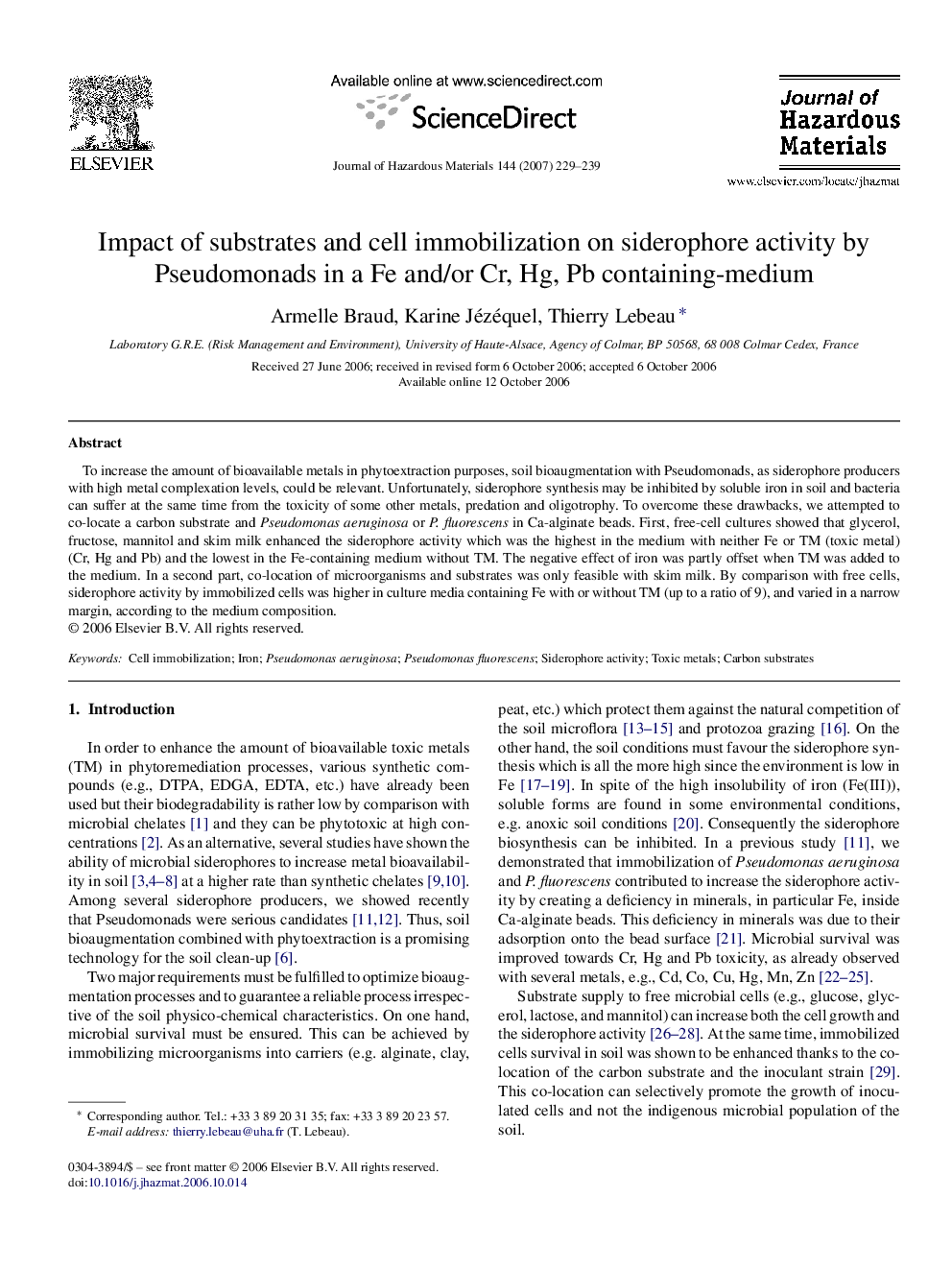| Article ID | Journal | Published Year | Pages | File Type |
|---|---|---|---|---|
| 584465 | Journal of Hazardous Materials | 2007 | 11 Pages |
Abstract
To increase the amount of bioavailable metals in phytoextraction purposes, soil bioaugmentation with Pseudomonads, as siderophore producers with high metal complexation levels, could be relevant. Unfortunately, siderophore synthesis may be inhibited by soluble iron in soil and bacteria can suffer at the same time from the toxicity of some other metals, predation and oligotrophy. To overcome these drawbacks, we attempted to co-locate a carbon substrate and Pseudomonas aeruginosa or P. fluorescens in Ca-alginate beads. First, free-cell cultures showed that glycerol, fructose, mannitol and skim milk enhanced the siderophore activity which was the highest in the medium with neither Fe or TM (toxic metal) (Cr, Hg and Pb) and the lowest in the Fe-containing medium without TM. The negative effect of iron was partly offset when TM was added to the medium. In a second part, co-location of microorganisms and substrates was only feasible with skim milk. By comparison with free cells, siderophore activity by immobilized cells was higher in culture media containing Fe with or without TM (up to a ratio of 9), and varied in a narrow margin, according to the medium composition.
Keywords
Related Topics
Physical Sciences and Engineering
Chemical Engineering
Chemical Health and Safety
Authors
Armelle Braud, Karine Jézéquel, Thierry Lebeau,
